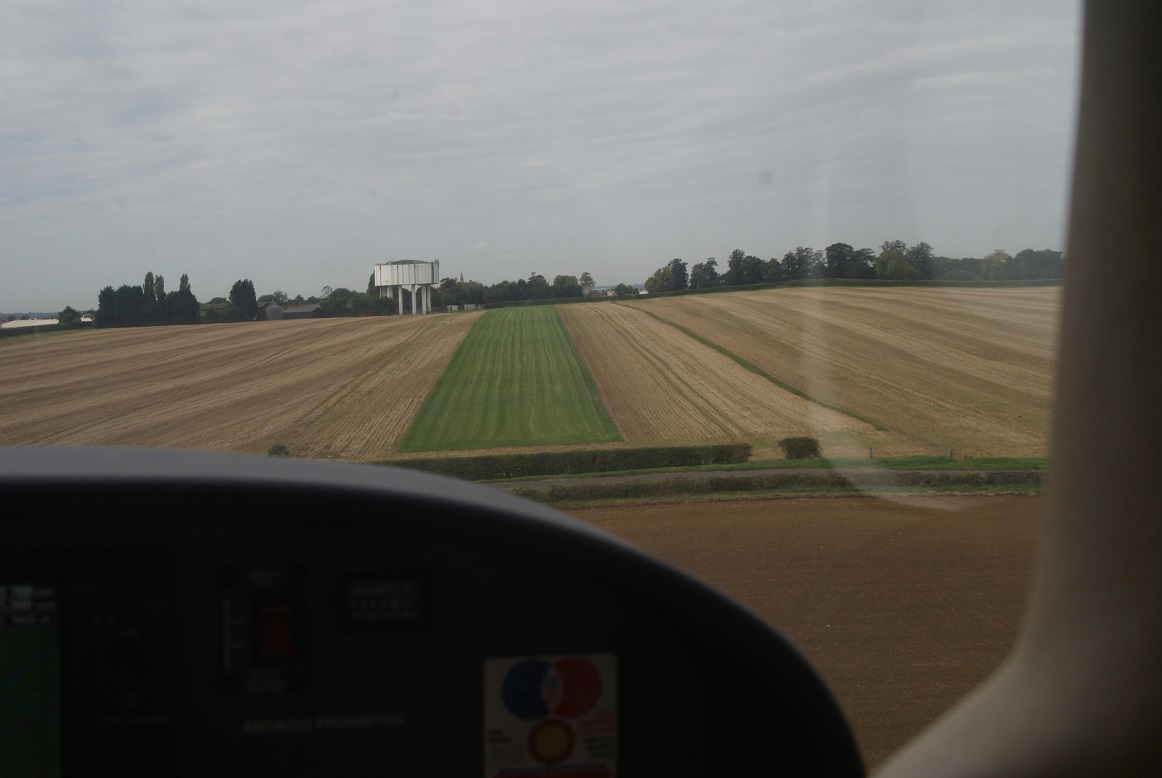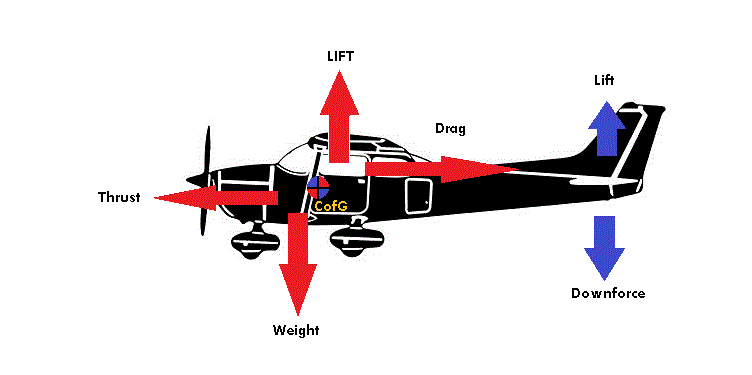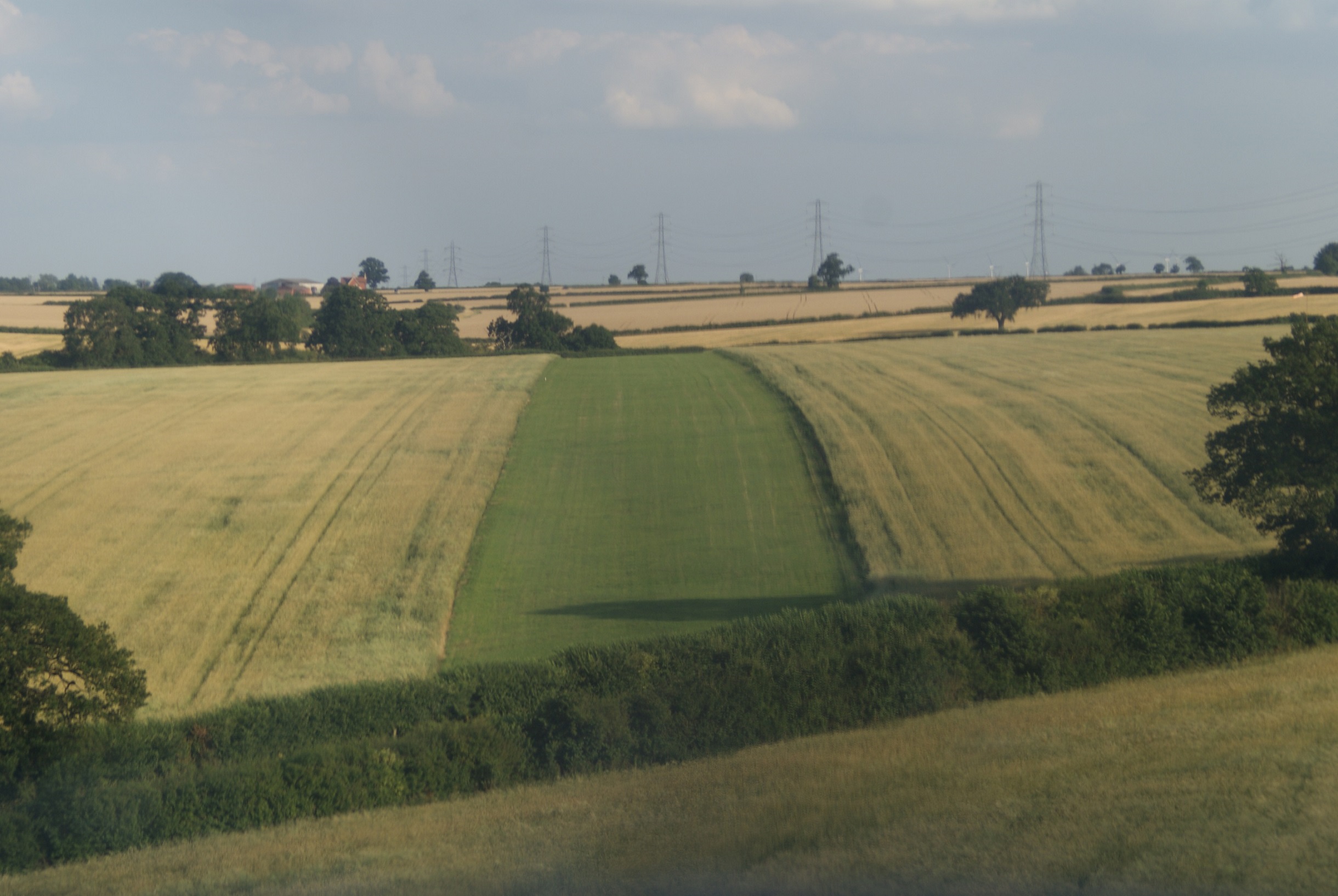When you’re learning to land there’s a couple of things that typically go wrong and perhaps you can relate to these experiences:
- The ground starts getting very big out the window so there’s a natural tendency to try and avoid hitting it. Your instructor is probably telling you “Keep it coming down, keep it coming down…” etc.
- Flare to soon: The plane starts to climb again, as you climb you realise you never were anywhere near the ground anyway, by the time you’ve sorted that out you’re half way down the runway 🙁
- Flare to late (or not at all): Unless your rate of descent is spot on and you get a gentle glide on to the runway, this will feel like a thump of all wheels hitting the ground together.
- Ballooning: Airspeed is too high when you flare so the aircraft gets airborne again, then there’s not enough power on to fly away, so airspeed simply converts into lift then there’s no more airspeed left to convert so you start to descend – this descending either gets you some more airspeed and the cycle repeats, or you stall and/or go THUMP into the runway, often nose gear first 🙁 More typically in training a sharp eyed instructor will tell you “Go Around!” the second you start to balloon.
Any of those sounding familiar?
When I started farm strip flying I did a lot of training and practice on getting my final approach airspeeds down from the Cessna 172S typical approach speed of 65 knots, down to 50 knots.
Kinetic energy increases as the square of velocity (ground speed). So if you arrive at the landing point at 55 knots (just 10% higher), you will increase your landing distance by 21% or put simply:
Less ground speed equals less energy to convert on landing, thus a shorter stopping distance.
The above gives you the rationale for why I aim for a final approach of 50-55 knots depending on the wind (higher if the wind requires it until potentially the strip becomes un-landable and we should go somewhere else today – but you did your homework about the likely max surface winds before we took off right?).
Once stable and down to approx. 50ft of height remaining, I’m looking to bring that speed down to ~48 knots (i.e. sub-50 but +40 with margin [POH Vs0 to Vs1 speed]). This is still ~14% slower then you might expect for a threshold speed.
A short diversion into Stalling
This article isn’t meant to be a detailed look at stalling, but it would be incomplete to talk about slower approach speeds without briefly touching on stalling.
Your first reaction to the above speeds will either be “wow that’s slow“, or possibly “but the POH says…” The POH on a Cessna 172S says it’ll fly (i.e. won’t stall):
- Vso (40 knots): “Stalling Speed or the minimum steady flight speed is the minimum speed at which the airplane is controllable in the landing configuration at the most forward center of gravity”
- Vs1 (48 knots): Stalling Speed or the minimum steady flight speed is the minimum speed at which the airplane is controllable
So the plane is not going to stall (according to the book of words).
It’s worth pausing again here, I’m talking about airspeeds and stalling. You might be screaming “critical angle of attack” at the computer screen 🙁 True, a wing stalls when it exceeds critical angle of attack, it can technically be made to stall at any airspeed. You won’t find that angle published anywhere though, the POH will only talk about indicated airspeed and for a controlled and gentle approach, airspeed can become a very close approximation.
Finally on stalling:
- A forward Centre of Gravity INCREASES the Stall Speed (so Aft CoG reduces it)
- Load Factor INCREASES stall speed (so don’t do +/-G manoeuvrers on finals!)
- More Weight INCREASES stall speed (Wing loading is the ratio of Weight to Wing Area, so reduce the weight, reduce the Load Factor, see bullet point above 🙂 ).
So no prizes for guessing what I aim to do when farm strip flying: I take at most 1 passenger, I want enough fuel to have safe margin, but if half tanks gives me 1hr of contingency then that’s plenty. The Vs speeds are for Max Weight, Full Forward CoG so if we reduce the weight and shift the CoG backwards then we can expect to get better performance (i.e. lower stall speed) then is quoted in the book of words and that gives us better safety margin.
Landing, Lift Force and Dynamic Pressure
Landing happens because the plane isn’t producing enough lift to hold it in the air or balance the weight vector if you prefer – remember your force couples.
So when the plane stops generating enough lift, eventually you hit the ground, hopefully at a gentle rate of descent:
Lift = Coefficient of Lift * Dynamic Pressure * Size of Wing
So increase the Coefficient of Lift, and all other things being the same you increase the lift.
Dynamic Pressure changes as the square of Airspeed
Assuming your air density is the same, at 50 knots if the dynamic pressure is 8 pounds per square foot, then at 100 knots the dynamic pressure will be 34 pounds per square foot. Now go back to the Lift Equation above, even without changing the Coefficient of Lift, if you have twice the airspeed you have A LOT more Lift.
Real world examples are better to get your head round then pure equations, so let’s take a slow approach of 50 knots indicated airspeed and a fast approach of 75 knots (Let’s assume the plane has a 174 sq foot of wing [Cessna 172S] and we have ISA sea level standard air density 1.225 kg/m3, it doesn’t matter what we pick here really because all we’re saying is “it’s the same plane in the same conditions except for speed”).
Dynamic Pressure = 0.5 * Air Density [kg/m3] * Airspeed ^ 2 [m/s]
- Dynamic Pressure @ 50 knots (25.72 metres per second):
- = 0.5 * 1.225 * 25.7222^2
- = 405.2 pascals => 8.46 pounds per square foot
- Dynamic Pressure @ 75 knots (38.58 metres per second):
- = 0.5 * 1.225 * 38.58^2
- = 911.6 pascals => 19 pounds per square foot
Lift = Coefficient of Lift * Dynamic Pressure * Size of Wing
Because all we care about for now is the effect of being fast, lets consider an ~5 degree angle of attack, which on a typical light aircraft will give us a Coefficient of Lift of about 1 which is a nice round number, you can find this in most text books on lift, but as I said, it doesn’t really matter because both examples use it as a constant.
- Lift @ 50 knots:
- = 1 (Coefficient of Lift) * 8.46 (Dynamic Pressure lbs/sq foot) * 174 (sq ft of wing)
- = 1,472 lbs of lift
- Lift @ 75 knots
- = 1 * 19 * 174
- = 3,306 lbs of lift
The basic empty weight of a Cessna 172SP is around 1700 pounds, if you’re landing with 20 US Gallons of fuel left (which is 2 hrs worth, so we’re not light here) and the pilot weight is about 140 lbs (10 stone). Then this plane isn’t going to land, it’s going to Climb away!! The only way to get the plane on the ground would be to reduce speed or lower the nose to reduce the Coefficient of Lift. By comparison you can see that at 50 knots the Cessna is going to be descending.
What’s interesting about the math above, is that at 75 knots for a low weight Cessna 172, you’d need to cut the coefficient of lift by about half before it’d descend.
That’s very relevant to the next part.
A final note about coefficients of lift, I’m assuming above that both planes are in the same flap configuration for a final approach. Flaps change the Coefficient of Lift so a plane flying with its flaps fully retracted will have a lower coefficient of lift, for the same angle of attack, then a plane with flaps fully extended thus the amount of lift generated when flaps are fully retracted will be lower. If you’re learning to fly, perhaps this helps you understand why ‘flapless’ landings are done at a higher airspeed.
Ballooning
Bringing us back to the root focus of this article: Ballooning and Ground Effect
Ballooning typically occurs because you were descending, then you pull back on the controls in the flare: Increasing the angle of attack of the wing thus increasing the Coefficient of Lift on the wing (you can see from the above math you can also balloon by adding airspeed [gust of wind / adding excess power]).
If you’re airspeed is high, then as demonstrated above, this increase in Coefficient of Lift is going to stop the plane descending and quickly start making it climb.
The danger now is that airspeed will drop off as you climb and that will make the amount of lift drop off like a brick (note the amount of lift between 50kts and 75kts above AND that climb performance is a function of excess power). As you lose lift quickly you’ll start to descend rapidly, the angle of attack is now high because your relative flight path is towards the ground but the wings are pointing up (giving a high angle of attack). You now risk entering a Quasi-Stall condition or worse a full stall. Pointing the nose at the runway (“pushing the plane on to the runway”) isn’t a brilliant idea as you’re maybe only 70ft above the runway. You’re burning up landing distance while this is all going on so even if you do get it sorted out, you might have used 150-200m of runway! Can you still land in the runway left? Hitting the hedge at end of the runway is still a crash…. Thus why in training it will be drilled into you that in the event of a balloon, apply full power and go-around immediately.
I want to emphasise here that at a high airspeed, it doesn’t take much in flare error (amount of change in elevator control) to make it all go wrong because you have so much lift to begin with. So you might get away with it on a couple of circuits, but the next time you try, just a degree or two more angle of attack from the wings will make a massive difference to the lift force. Thus approaching at the correct airspeed gives you some safety margin on your elevator control when beginning to flare and stop the plane jumping into an attempt to climb when it doesn’t have the power to do so.
Remember also that control forces are less responsive at slow airspeeds so it’s inherently harder to make the plane suddenly change its angle of attack to an extent that will cause a balloon if the final approach airspeed is right.
Ground Effect
So perhaps I’ve convinced you of two things:
- Less ground speed = reduced stopping distance.
- Reduced Airspeed reduces the lift forces and can help prevent ballooning.
Quite simply if we want to stop in the shortest distance possible, we want to do everything possible to get the airspeed down without stalling the wings – stalling is bad!
You can get 48 knots in a Cessna 172S fairly easy on approach, as your airspeed drops to 40 you’re going to very likely hear the Stall Warner begin to screech intermittently. Doing this in gusting winds is a really bad idea because while power + attitude = performance, the performance isn’t instantaneous so gusting could stall the wing.
We therefore want to ‘transition’ the airspeed from 48 knots to 40 knots and have some margin. With practice and a precise landing for when to transition, Ground Effect will let you achieve slower airspeeds over the threshold safely.
Ground Effect works by reducing the induced drag of the wing when in close proximity to the ground. It’s equivalent to suddenly increasing the wing span and as we saw from our math above – if we increase the wing size, we get more lift for the same airspeed, therefore letting the plane fly slower for the same lift as it would generate at higher airspeeds outside of ground effect.
Change of wing span, what?
This is where you often read that ground effect reduces induced drag thus why it works, job done. True, ground effect reduces induced drag, but I just said it’s like increasing the wing span, what’s wing span got to do with anything? Well wing size is really all you have in the lift equation to play with, if airspeed is constant then dynamic pressure will be constant and the lift coefficient will be constant because angle of attack is constant. So we’re left with an equivalent change of wing span. It’s outside of the scope of this article, but if you want to get into the detail, go look at the equation for induced drag and you’ll see that for a basic aerofoil shape/wing, wing size is all that controls it if everything else is constant. But suffice to say don’t just think about the fact your changing the airflow behind the plane, but you’re also changing the ability for vortices to destroy the airflow above the wing thus you have more wing (effectively) for the same plane, much as if you had a bigger wing…..but without the weight.
Ground effect begins to occur when the plane is about one wingspan from the ground and increases effectiveness the closer you are to the ground.
A Cessna 172S with a wing Span of 11m (36ft) thus enters ground effect just after the threshold speed typically quoted for 50ft. We can then begin to transition from Vs1 (48knots) speed to Vs0 speed (40knots), in the knowledge that Ground Effect is about to kick in and ensure the wings continue to generate lift (i.e. don’t stall) as we land.
It is important to note ground effect works by reducing drag, but drag helps us decelerate the plane to achieve best stopping distance. We can’t avoid ground effect on landing, so reducing power and airspeed as we enter ground effect helps achieve best landing distance performance (stopping in the shortest distance possible).
Final Thoughts on Safety
I’ve talked a lot about and perhaps convinced you with some equations to try slowing down your final approach airspeeds. Too much speed in untrained hands when driving a car is dangerous. Equally, flying slow speeds in a plane when inexperienced and especially if combined with a challenging runway that will in itself present challenges and distractions is dangerous. Always seek proper training, if you’re new to short strips and slow approaches, find an experienced farm strip instructor and go do some flying with them first!
Oh and use the airspeed the runway requires, because stalling 20ft short of a one mile long runway is always going to look bad and suggest things to investigators like you were trying to show off for no reason. The aim of the game is to fly safely and to manage the risks!


